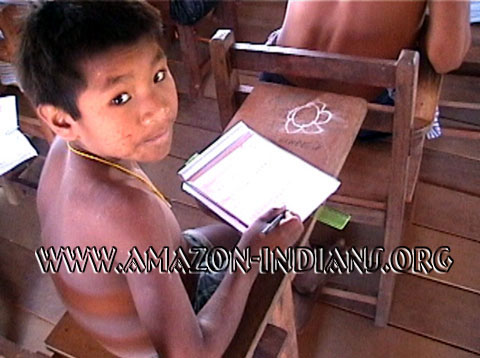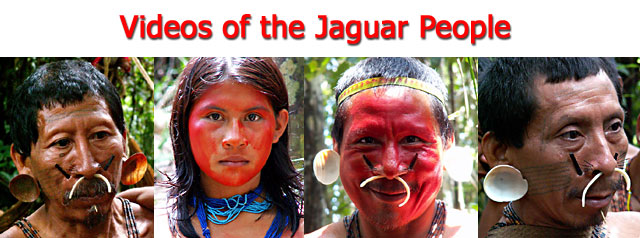|
he goal of this publication is to provide
education to the general public and to indigenous people. It is
my belief that education is the key to indigenous cultural survival. Without
education, the young will not learn about their culture and perpetuate their
traditions; without education, outsiders will not appreciate indigenous cultures
and give them an opportunity to survive.
What are the key indicators of indigenous cultural integrity? Is it the way
indigenous people
dress? Is it the absence of modern technology? Many scientists are focusing
on language as a key indicator, because when a language dies, it takes with it
the essence of the culture and its traditions. It is not change or
technology per se that threatens the survival of a culture. To give an example, the indigenous people of
the Amazon are no less indigenous when they wear modern clothing and use boat
engines than I am lesser an American because I no longer use horses and buggies
like my pioneer American ancestors did. Indigenous cultures are not
inferior cultures doomed to extinction. Native cultures are dynamic and
adaptable, and presently, many are threatened by identifiable external factors.
Some indigenous Amazon cultures are being driven out of existence by foreign
diseases, other by the destruction of the rainforest. Given the
opportunity, indigenous people are capable of surviving in a modern world.
Where are the most culturally-intact Amazon
Indians located? Many are located in the frontier areas of Peru and
Brazil. As a former resident of the Peru-Brazil border area, I highly
recommend taking the time to explore the frontier. Here you will find virgin
primary rainforests and rarely visited indigenous communities. The tribal
land of the Matsés Indians on the
Rio Gálvez is an
excellent area to experience pristine rainforest and real Amazon natives.
In addition, please refer to my articles on the
Matis,
Marubo,
Mayoruna, and
Ticuna Indians.
How can you visit "real" Amazon Indians? The
best way is to contact the indigenous tribes directly rather than using
middle-men such as commercial guides. Generally it is much more
economical, guarantees you will meet authentic natives, and makes sure the
indigenous people receive something for their efforts to teach you about their
culture. I will be glad to take the time to personally help you plan your
visit to the Amazon by putting you in direct contact with Amazonian natives.
Moreover, I will provide you with various maps, books, and educational resources
to help make your journey a success. All I ask is that you get my
videos,
which will help you learn about real indigenous Amazonians and show you exactly
what you might expect to experience during your encounter.
One word of advice, please get to know the Amazon and its natives while it is
still possible. Time and again, it amazes me how many people visit the Amazon
without really seeing it. In the near future, it may no longer be possible to
experience virgin rainforests or see indigenous people living like they did
before Columbus arrived. Because of the large size of cities like Iquitos, Peru
and Manaus, Brazil and the
exploitation of nearby resources (forest and wildlife) to support the cities, you
must travel quite a long distance from them to encounter primary rainforest
and unassimilated natives. Unfortunately, tour guides do not travel very far
from the large cities because of the expenses involved. It is much easier and less
expensive for tour guides to travel locally and mislead tourists into thinking
they are in a virgin rainforest or visiting real natives, than actually taking
them there. To really know the Amazon and its people you need to go to travel
far from the cities. On the frontier areas of Peru with Brazil you will find the last
remaining virgin tropical forests and recently-discovered tribes of the Amazon.
Some tour guides have criticized me for sending tourists away from the cities to the
more pristine areas. Again, my goal is not to promote tourism,
but to provide people with the best information available so that they can
learn about native peoples. If you would like help planning your journey to the
rainforest, please do not hesitate to
contact me at
editor@amazon-indians.org.
Dan James Pantone, Editor
Amazon-Indians
|



